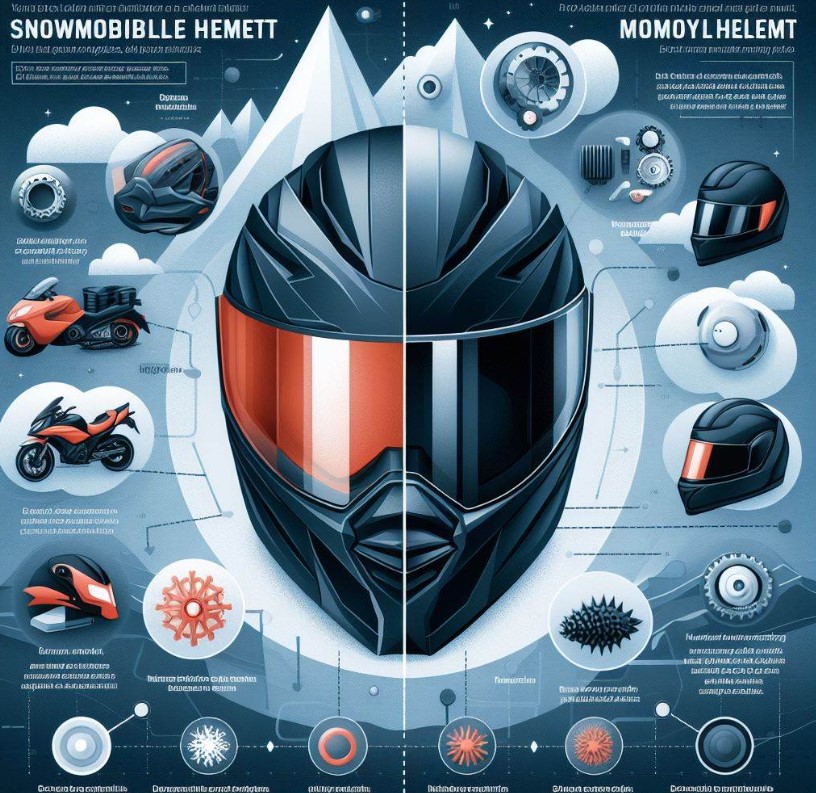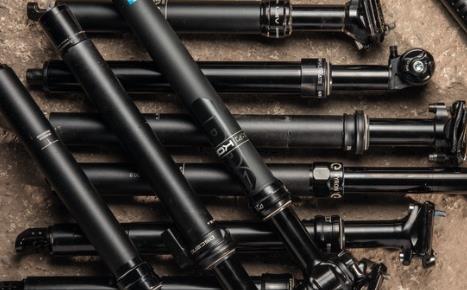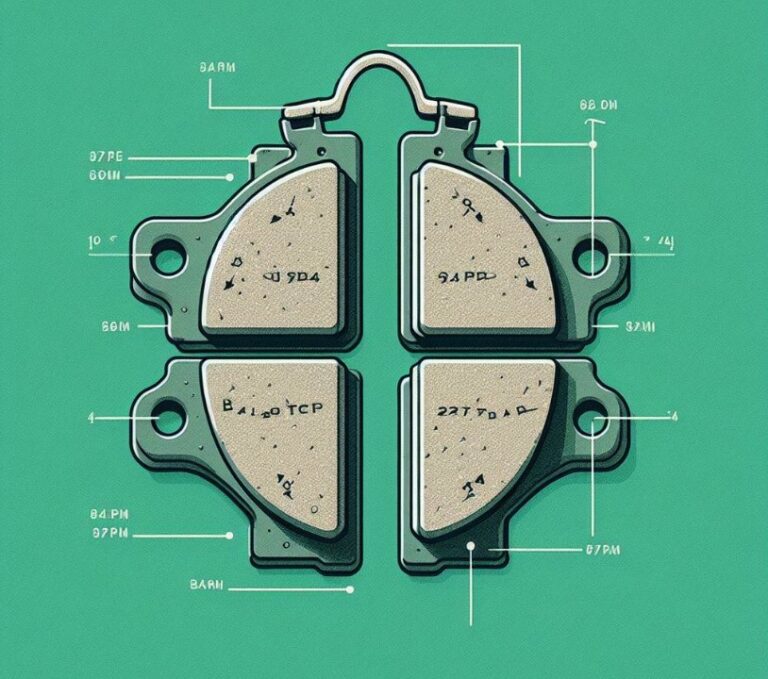How Do Snowmobile Helmets Differ From Motorcycle Helmets?
Are you looking for How Do Snowmobile Helmets Differ From Motorcycle Helmets? This question is vital as each helmet type is designed with distinct features to suit specific environmental conditions and riding experiences. Understanding these differences ensures riders make informed decisions tailored to their activities. Selecting the right helmet is crucial for safety and comfort, whether zooming on a snowmobile or riding a motorcycle.
Key Takeaways
- Snowmobile helmets are designed for cold weather, featuring better insulation and breathability.
- Motorcycle helmets are optimized for warmer conditions, focusing on ventilation and impact protection.
- The visor and face shield design differ significantly between these helmets to cater to different environmental conditions.
- Snowmobile helmets often include features like heated visors to prevent fogging, which is less common in motorcycle helmets.
How Do Snowmobile Helmets Differ From Motorcycle Helmets?
Snowmobile helmets differ from motorcycle helmets primarily in their design for cold weather, featuring better insulation and fog-resistant visors, whereas motorcycle helmets are optimized for warmer conditions with better ventilation and different safety features.

Design and Insulation
Snowmobile helmets are uniquely designed to combat the harsh conditions of winter sports. They typically feature enhanced insulation to retain heat and protect the rider from freezing temperatures.
This is a stark contrast to motorcycle helmets, which are designed to provide airflow and cooling in warmer environments. Snowmobile helmets also have a double or electrically heated visor to prevent fogging, a common issue in cold weather.
Motorcycle helmets, on the other hand, prioritize ventilation to keep the rider cool and comfortable in warmer temperatures. They have multiple air vents that can be opened or closed to control airflow. This design helps in reducing heat and moisture inside the helmet, which is less of a concern for snowmobile helmets.
Visor and Face Shield
The visor and face shield are crucial components in any helmet, designed to protect the rider’s vision from external elements. Snowmobile helmets often come with dual-pane or heated face shields to combat the fogging caused by cold temperatures. These features are specifically engineered for low temperatures and high humidity environments typical in snowmobiling.
In contrast, motorcycle helmets usually feature a single-pane visor and focus more on scratch resistance and UV protection. These visors are designed for clearer vision in sunny and warm conditions, where fogging is not as much of an issue due to higher external temperatures.
Safety Features and Standards
While both snowmobile and motorcycle helmets must meet specific safety standards, the criteria can differ based on their intended use. Snowmobile helmets, for example, might include additional features for thermal protection and shock absorption from cold-weather impacts. They also might be built to accommodate balaclavas or other cold-weather gear underneath.
Motorcycle helmets are designed with different impact standards in mind, considering higher-speed collisions and warmer weather impacts. They are also subjected to stringent aerodynamic testing to ensure stability and comfort at high speeds, which is less of a focus for snowmobile helmets.
Weight and Comfort
The weight and overall comfort of a helmet can significantly affect the user’s experience. Snowmobile helmets are generally heavier due to the added insulation and features like heated visors. However, they are designed to balance the weight evenly to reduce neck strain during long rides.
Motorcycle helmets are usually lighter, enhancing comfort during long journeys in warmer weather. They are designed to reduce drag and lift at high speeds, which can also help reduce rider fatigue.
Communication Systems
In today’s connected world, many riders look for helmets with integrated communication systems. Snowmobile helmets often come equipped with features that facilitate communication in the noisy, windy conditions typical of snowmobiling.
These systems are designed to function effectively in cold weather, where gloves and heavy clothing can make operation more difficult.
Motorcycle helmets also offer communication systems, but these are tailored to the needs of motorcyclists, focusing on wind noise reduction and integration with other road-compatible technologies.
The requirements for these systems vary significantly from those of snowmobile helmets, reflecting the different environments and types of communication needed.
Can I Use A Motorcycle Helmet For Snowmobiling?
Using a motorcycle helmet for snowmobiling is not recommended. Motorcycle helmets are specifically designed for warmer conditions and do not have the necessary insulation required for cold weather encountered during snowmobiling. They also lack features such as dual-pane or heated visors, which are crucial for preventing fogging in cold temperatures.

Moreover, motorcycle helmets may not provide the same level of protection against the potential hazards of snowmobiling, such as flying debris or low-hanging branches. For safety and comfort, it’s best to use a helmet specifically designed for snowmobiling.
Can Ski Helmets Be Used For Motorcycle?
Ski helmets should not be used for motorcycle riding. Ski and motorcycle helmets are designed for different purposes and meet different safety standards.
Ski helmets are optimized for impacts at lower speeds and protect against cold weather conditions. They lack the robust shell structure and energy-absorbing materials required for motorcycle helmets, which are designed to withstand higher impact forces and provide greater head protection at higher speeds.
Additionally, motorcycle helmets have specific features for road use, such as visors for eye protection and aerodynamic designs for stability at high speeds.
Are Snowmobile And Dirt Bike Helmets The Same?
Snowmobile and dirt bike helmets are not the same. Each type of helmet is designed to meet the specific requirements of its respective sport.
Snowmobile helmets are tailored for cold weather, featuring better insulation and fog-resistant visors to handle freezing temperatures and breath condensation. They may also come equipped with built-in heating elements or provisions for balaclavas and neck gaiters.

On the other hand, dirt bike helmets are designed with ventilation in mind, suitable for warmer conditions and high-intensity activities.
They typically feature an open-face design with an extended chin guard and ample ventilation to keep the rider cool. The visors on dirt bike helmets are designed to shield the eyes from mud and debris rather than prevent fogging.
What Type Of Helmet Is Best For Snowmobiling?
The best type of helmet for snowmobiling is one that is specifically designed for the sport. A good snowmobile helmet should have a full-face design with a dual-pane or heated visor to prevent fogging.
It should provide adequate insulation to keep the rider warm in cold conditions while allowing enough ventilation to prevent overheating. The helmet should also meet safety standards such as DOT or ECE to ensure it provides sufficient protection in case of an accident.
Features like removable liners and cheek pads can offer additional comfort and ease of cleaning. For enhanced safety, consider helmets with integrated communication systems and reflective materials for better visibility.
Conclusion
In summary, while both snowmobile and motorcycle helmets serve the fundamental purpose of protecting the rider, their differences are distinct and significant.
Snowmobile helmets are designed to offer warmth and prevent fog in cold climates, while motorcycle helmets focus on ventilation and heat dissipation.
Choosing the correct helmet type enhances safety, comfort, and overall riding experience, emphasizing the importance of understanding these differences before making a purchase.
Frequently Asked Questions
What features should I look for in a high-quality snowmobile helmet?
When looking for a high-quality snowmobile helmet, consider features such as adequate insulation, breathability, a fog-resistant visor, safety certifications, a comfortable fit, and the option for integrated communication systems. Additionally, consider the helmet’s weight and overall design for long-term comfort and protection.
How should a snowmobile helmet fit?
A snowmobile helmet should fit snugly around your head and face without causing pressure points. There should be no excessive movement, and the cheek pads should touch your cheeks without pressing too hard. A proper fit ensures maximum protection and comfort.
Can I wear glasses with a snowmobile helmet?
Yes, many snowmobile helmets are designed to accommodate glasses. Look for helmets with grooves or padding designed specifically for eyewear to ensure comfort and a good fit.
What is the difference between a modular and full-face snowmobile helmet?
A modular snowmobile helmet has a front section that can be flipped up, offering more flexibility and comfort, especially when communicating or taking short breaks. A full-face helmet, on the other hand, provides more comprehensive protection as it covers the entire head and face with a fixed chin bar.

Welcome to the exhilarating world of Matt Rex, a professional car racer turned renowned vehicle enthusiast. Immerse yourself in his captivating blog as he shares heart-pounding adventures, expert reviews, and valuable insights on cars, trucks, jets, and more. Fuel your passion for speed and discover the beauty of vehicles through Matt’s engaging stories and meticulous expertise. Join the ever-growing community of enthusiasts who find inspiration and expert advice in Matt Rex’s blog—a digital hub where the thrill of speed meets the pursuit of knowledge.






